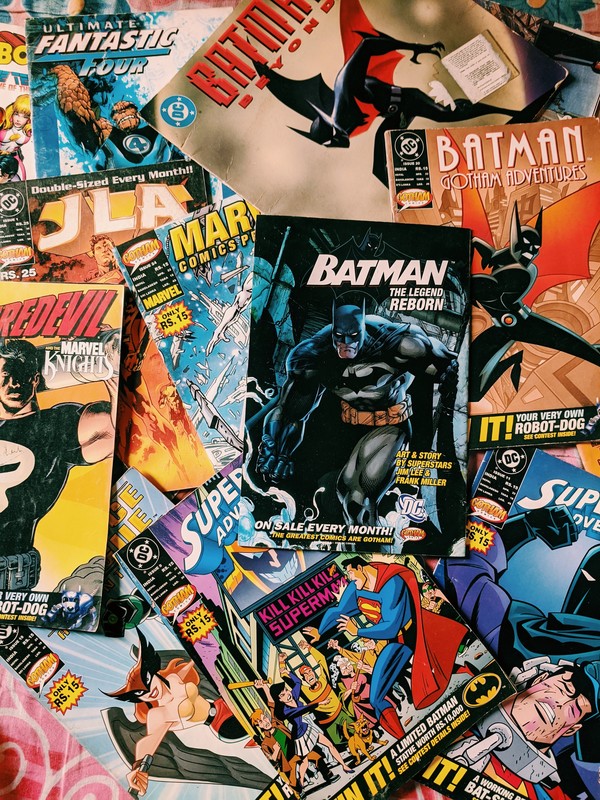On the characteristics and impacts of kidults
THESE DAYS, almost every new film release is accompanied by a slew of merchandise announcements. Even within the sea of goods, some stand head and shoulders above the rest with their level of detail. Hyper-realistic action figures over 12 inches tall or massive bust statues of popular characters are notable examples, with both retailing for anywhere between a couple hundred to several thousand dollars a pop. Such collectible items are far more than mere toys for children, catering primarily to a group of adults with “childish” tastes, and this demographic has been exploding in size in recent years. Enter the kidults.

Introduction to kidults
The term “kidult” first appeared in the 1950s, referring to adult viewers of popular children’s TV shows[1]. Today, a kidult can be defined as an adult who is fond of things generally associated with children, such as cartoons, superheroes, and toys. They are avid consumers of media widely seen as reserved for children, like cartoons, anime, and superhero movies. Moreover, kidults collect video games, toys, and action figures, in addition to wearing clothes and utilizing accessories with youthful designs. Although the NPD Group sets the age range of kidults to be 12 years or older, the vast majority of kidults today are millennials born between 1982 and 1995. Boomers from 1955 to 1964 also make up a large portion of the kidult demographic, followed by Generation Z that is now getting up there in age.
It would be remiss to view kidults as mere oddballs that deviate needlessly from societal norms. Experts state that the psychological cause for kidult culture is the sense of comfort brought by items that remind adults of their childhood, something that serves as a welcoming respite against the harsh realities of work and family life[2]. There are many other motivations behind kidult culture, ranging from simple childhood nostalgia to a desire for tangible, physical representations of iconic pop cultural elements. Kidults who collect detailed action figures or models often do so out of interest in intricate micro-engineering. Others view such merchandise as investments, picking up rare, limited-edition items right after release and selling them years later once they have skyrocketed in value.
Branches of kidult culture
The most prominent group of kidults are the hardcore fans of “childish” media, namely films, TV shows, animations, and games. Particularly popular among kidult moviegoers is the superhero genre produced by studios such as Disney/Marvel and Warner Brothers/DC, which collectively earned about 15.6% of the global box office revenue in 2022[3]. Video games from developers like Nintendo, Ubisoft, EA, and Activision Blizzard are also staggeringly popular, with more than 2/3 of adults in the United States gaming regularly[4]. Yet unlike younger audiences, kidults often do not stop at watching films and TV shows or playing games. Millions of kidults interact with one another through dedicated fan communities on Twitter, Instagram, Discord, and Reddit, discussing everything from in-universe lore to leaks and rumors about upcoming projects. Some even go as far as creating their own content based on the films and shows they love, uploading lore explanation videos on YouTube, or fanmade stories involving popular characters on Fanfiction and Wikia. Moreover, dedicated conventions for kidults, where they can buy merchandise and interact with the creatives behind their favorite franchises, have been progressively growing in popularity. The largest of such conventions is the San Diego Comic Con (SDCC), attracting more than 150,000 participants each year—a significant number of which are kidults.
The overwhelming popularity of media franchises has carried over directly to the merchandise sector, where apparel, miniatures, model kits, and accessories have become more diversified than ever before. Companies like Hong Kong-based Hot Toys fulfill the demand for replicas of beloved characters, whose 1/6th scale figures feature intricate sculpting, paintwork, and moving parts that bring fictional characters to life in collectors’ hands. More engineering-savvy kidults gravitate toward Japanese company Bandai and their line of model kits based on the popular Gundam franchise, while others purchase special-edition superhero-themed gadgets from tech companies such as Samsung. The market for replicas is not just limited to media franchises, with many kidults collecting miniatures of real-life military equipment, automobiles, and aircraft. Military model kits from Japan’s Tamiya, Hasegawa, and Korea’s Academy have been staples of kidults’ shelves for decades, alongside model cars from the likes of Amalgam Collection. Geminijets has reliably supplied aviation enthusiasts since the 1990s, now joined by new brands like NG Models that are pushing the boundaries of realism and refinement.
Kidults’ impact
Kidults’ impact on the entertainment and toy industries has been immense. In the United States alone, adults drove 60% of the toy industry’s dollar growth, with consumers over the age of 18 accounting for 14% of total sales[5]. In 2021, it was reported that 58% of adults bought toys and games for themselves, a figure that illustrates the widespread nature of kidult culture[5]. For individual toy companies, kidults are perhaps even more important of a demographic than young children; unlike children who are entirely reliant on their parents for purchases, kidults have both the interest and financial means to make immediate purchases, which translates to a larger revenue for firms.
* * *
It may be easy to view kidults as mere social anomalies, but this could not be further from the truth. Finding solace in childhood memories and utilizing hobbies as a conduit for positive energy doubtlessly goes a long way towards ensuring happiness in today’s stressful society. Kidult culture is here to stay, having far eclipsed its genesis as a niche culture and establishing itself as a key market demographic for entertainment and merchandise companies alike.
[1] The Hustle
[2] Yonhap News Agency
[3] Yahoo Entertainment
[4] USA Today
[5] Insider Intelligence

